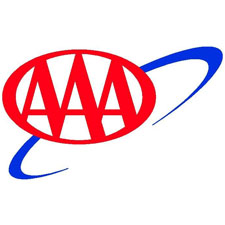
The average price U.S. motorists pay at the pump declined for 12 straight days to start the month of March (February 27 through March 11), the longest streak of falling prices in 2013. The national average has dropped seven cents to begin March, which is counter to the trend that motorists may remember from the same stretch in recent years. The price increased by 17 cents and six cents during the same periods in 2011 and 2012, respectively.
The spike in pump prices earlier this year was a product of refinery maintenance and concerns, rather than more expensive crude oil. These refinery issues pressured both wholesale and futures prices higher for gasoline, while crude oil prices only increased slightly during the same period. The recent decline in the national average is partially due to cheaper crude oil but is more closely linked to sharply lower wholesale gasoline prices.
Crude oil inched its way above $93 per barrel this week in response to positive domestic and international economic data, signaling these economies may be faring better than expected. The U.S. dollar rose to a three-month peak against the euro, coupled with U.S. jobless claims falling (for the third straight week) by a greater than expected 10,000 to 332,000, and retail sales jumped 1.1 percent in February. These factors helped send the Dow Jones industrial average to a record high earlier this month and extend a positive streak to 10 days (before retreating slightly Friday to end its longest streak in 16 years). Sentiment continues to grow that the U.S. economy is gaining traction, which would likely lead to increased crude oil (and subsequently gasoline) demand. Crude oil closed at $93.45 Friday, down 1.6 percent for the week.
In its weekly report, the Energy Information Administration (EIA) data showed crude oil stocks rose (for the eighth straight week) 2.6 million barrels to 384 million barrels, putting inventory levels at their highest level of 2013 and 10.5 percent higher than one year ago. Gasoline stocks dropped 3.6 million barrels to 224.3 million barrels, likely due to the switch over to summer blended gasoline. Gasoline demand saw a pop last week to 8.627 million barrels, a 263,000 barrel-per-day (bpd) increase. The four-week rolling average for gasoline demand is up about 1.1 percent, likely due (in part) to Spring Break activities. Domestic crude oil production continues to rise and expectations for production to exceed imports still appear to be on pace for this summer/fall. Last week U.S. crude oil production hit 7.159 million bpd, the highest level since July of 1992.
“Motorists are enjoying a bit o‘ green this St. Patrick’s – in their wallets that is – thanks to a downward trend in gas prices this month,” said Martha M. Meade, Manager of Public and Government Affairs for AAA Mid-Atlantic. “Although it is too soon to say whether retail prices have peaked for the spring (there is still refinery maintenance to be completed and much of the country must still transition to summer-blend gasoline), AAA believes prices at the pump should level off this spring and retreat into the summer months. In fact, AAA gas price partner Tom Kloza of OPIS believes ‘whatever you pay on St. Patrick’s Day will be considerable more that you’ll pay on July 4th or Labor Day.”
In its Short Term Energy Outlook released last week, the EIA expects that lower crude oil prices will result in monthly average regular gasoline prices staying near the February average of $3.67 per gallon over the next few months, with the annual average regular gasoline retail price declining from $3.63 per gallon in 2012 to $3.55 per gallon in 2013 and $3.38 per gallon in 2014.
Also last week, OPEC said it continues to expect global oil demand to grow by 800,000 barrels this year, but warns of downside risks in its March report. Euro instability and the U.S. budget cut could drag the world economy down. At the same time, Japan may revert its block on nuclear power, reducing demand for crude.










